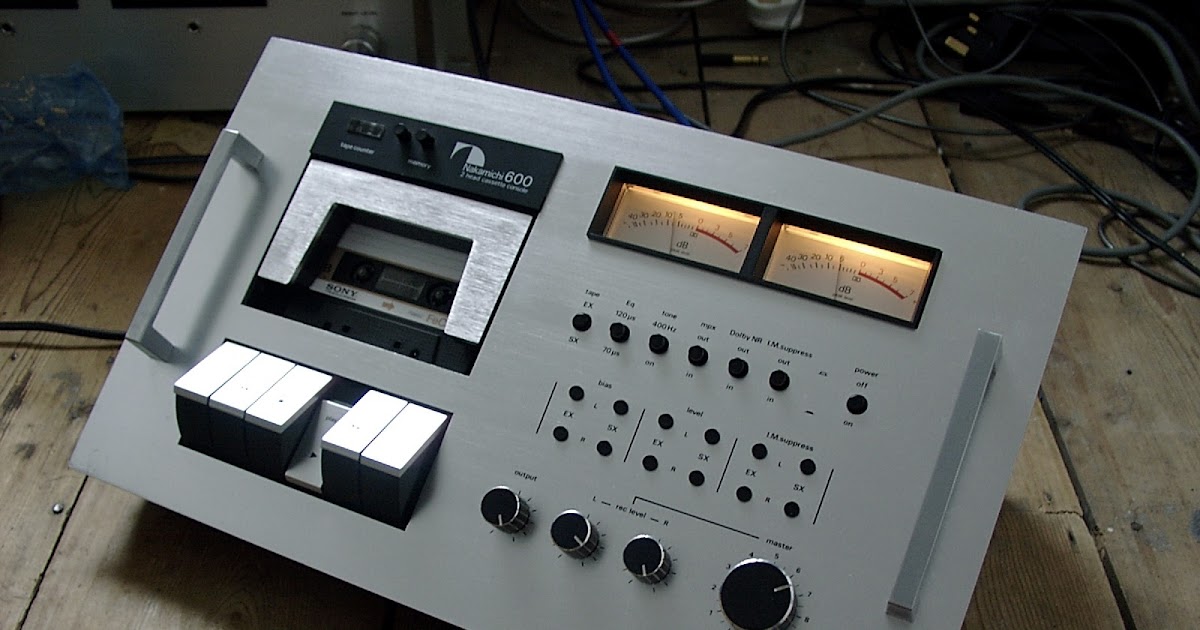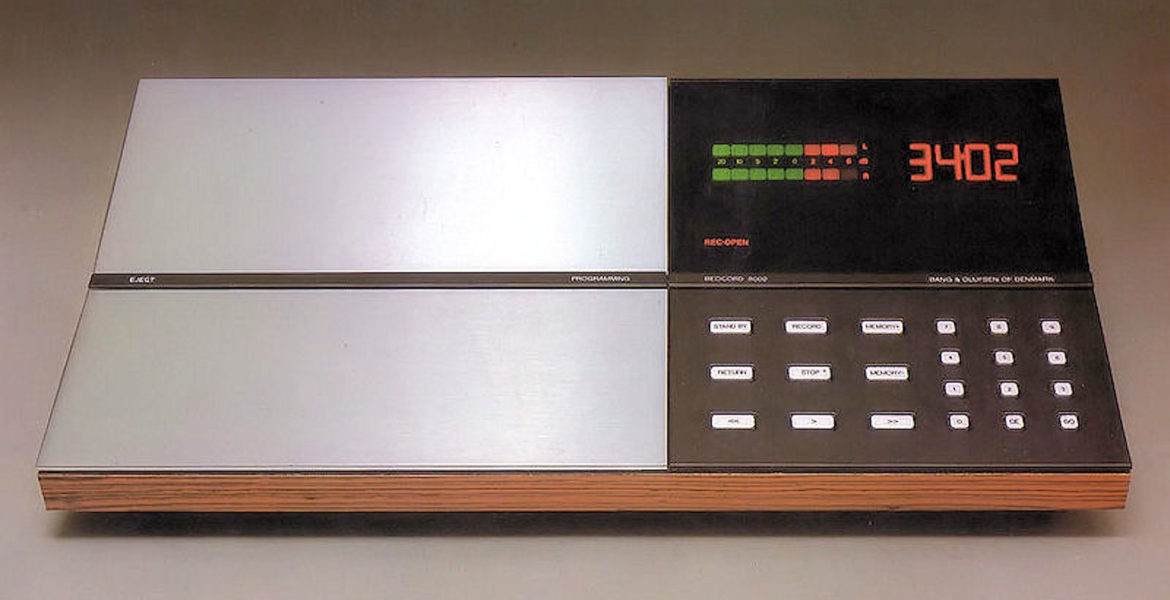Few other Japanese names were as intimately connected with tape as Aiwa, save from Nakamichi. Sony, JVC, and Pioneer all made excellent specimens of the breed, but there were other outstanding models as well. Aiwa produced a wide range of equipment, including some unusual and unusual items such as the LP-3000 turntable and AT-9700 tuner, but their mainstay was high-quality mid-priced cassette decks. Akai earned a reputation for itself in this category as well, but it was better known for their open-reel tape recorders from around five years before. Aiwa, almost singularly, seized the rising of cassette, snatched the ball, and rushed with it.
The Compact Cassette narrative began in August 1963, when Philips, a Dutch electronics company, unveiled a prototype of a small magnetic tape cartridge meant to work in battery-operated players that could be taken anywhere. It was reversible, and because to a low tape speed of 4.76cm/s, it could record up to 45 minutes each side. The tape had an Iron oxide formulation maintained on a Mylar backing, similar to that used in commercial open reel recorders. BASF, a German corporation, was asked to provide their PES-18 compound. Its tiny 3.81mm width was designed for mono operation, and only a little portion of the tape was exposed, making it a reasonably tough format by today’s standards.
The format was particularly important to the Japanese. Philips demanded a license fee from hardware makers, but the cassettes themselves were to be free of charge. In September 1963, Grundig, a German corporation, proposed to Sony that the two collaborate on developing an international standard for cassette tapes, ostensibly to keep Philips out. The Dutch behemoth reacted by proposing a joint development of its Compact Cassette format; this was agreed upon, but royalties were a sticking point. Philips demanded 25 Yen per unit at first, then 6 Yen. Sony’s Norio Ohga rejected, stating that the company would prefer to adopt the Grundig system, prompting Philips to abandon their request. It waived Sony’s royalties and made the technology available to the general public in 1965, when the Compact Cassette name was born…
The Japanese, who are obsessed with miniaturization, leaped at the opportunity. The Model 201 from Advent, released in 1971, was the first hi-fi cassette recorder, combining Dolby NR and chrome tape capability. It wasn’t a huge hit, but it did bring in the hi-fi era. Then, in 1973, Nakamichi released the 1000 machine, a massively expensive cassette player that gave the format true audiophile status. Within a year, tape decks were available from all major Japanese manufacturers. Aiwa introduced the AD-1200, a fine ‘cheap’ machine, and quickly expanded its range to include a variety of price points…
The initial generation of Japanese cassette decks were top-loaders, as many of us have forgotten. However, by 1975, the most high-end designs had evolved into so-called ‘ski-slope’ designs, with a sloping front panel and often a (then-fashionable) perspex dustcover, due to the very handsome Mario Bellini-designed Yamaha TC-800GL. The 600 by Nakamichi was an excellent example of this, but it was prohibitively pricey. Aiwa introduced the AD-1250 in 1976 after noticing a void in the market. It had the same appearance as the Nakamichi, but for £150, it was nearly a third of the price. It had many of the same Sony components as the TC-118SD, including a competent basic frequency generator servo motor with belt drive and a moderately large flywheel. Aiwa Ferrite Guard Heads (FGH) were utilized, which are a version on Sony’s F&F heads and are extremely durable. To compensate for the slow ballistics of the analogue VU meters, the deck had Ferric, FerriChrome, and Chromium Bias and EQ positions, as well as a peak recording level LED. A variable output level control was installed around the back.
The deck received positive reviews in British hi-fi magazines at the time, and it was praised for its style. In a world enthralled with Star Wars, the visual futurism of the AD-1250s fit perfectly with the atmosphere of the moment. The massive slab of brushed aluminium that covered the control panel was stunning, but the silver painted plastic shell was less so; it looked wonderful when new, but it hasn’t held up well over time, and many specimens now have faded or worn paint. The piano-style transport controls were similarly made of plastic, but the mechanism worked smoothly and didn’t let the side down. It also didn’t have logic control, which was common on mid-priced decks at the time, let alone the relatively low-cost end of the market where the AD-1250 resided.
Many people adored the AD-1250, but it did appear to be a Ford Cortina done up in Ferrari garb. It had a stunning body that outshined all of its price rivals, but it was all too basic vanilla once you looked past those elegant curves. What was needed was a spec’d-up design that would give the chassis a truly exotic feel for a very little price increase. The AD-2000 was just that; it was released in September 1978 and arrived in the UK as a 1979 model with the (at the time) remarkable addition of neon peak metres. The analogue VU metering on the AD-1250 was awful, so this was a worthwhile upgrade that added a lot of showroom appeal. Variable bias was another beneficial addition, allowing customers to adjust it by 20% for the Ferric tape of their choosing. The casework was likewise painted dark grey, the transport controls were silver, and the dustcover was clear rather than smoked.
A well-maintained AD-2000 has a silky feel to it, operates smoothly, and has a fairly large frequency range — the manufacturer claims better than 0.18 percent speed stability and a frequency range of 25Hz to 16kHz (-3dB) correspondingly. A 58dB signal-to-noise ratio, which is increased by 10dB with Dolby turned on, is likewise extremely good for the time, but not outstanding. As a result, you get a sweet-sounding cassette deck that’s snappy, punchy, and entertaining to listen to. Of course, it’s no Nakamichi 600, but it’s rather lovely, and it’s strange that Aiwa didn’t sell more. The AD-2000 was initially priced at £200, but its ski-slope shape appeared to hasten its demise; by 1980, people preferred front loading cassette players, and the AD-2000 appeared to be beating a dead horse artistically. The final models were sold in Comet for £50 with a free dustcover; it was an embarrassing finish. What was once the shape of things to come was quickly forgotten.
In the grand scheme of Aiwa things, the AD-2000 is a rare cassette deck; it produced a large number of front loaders, many of which were excellent, whose sales dwarfed it. Even still, they appear secondhand with reassuring regularity; if you look closely, you’ll find a couple every month. Depending on the condition, prices range from £10 to £200. If at all possible, avoid an old and worn-out one; restoring a cassette deck to like-new condition is costly, and there are few specialists who can accomplish it. The belts are the most important servicing item on the AD-2000; like any forty-year-old piece of rubber, they’ll need to be replaced if they haven’t already. The ferrite heads seldom wear out, so if the one you’re considering appears to be past its prime, it’s likely that it’s been hammered. If you can find one with the original package, that would be ideal.






